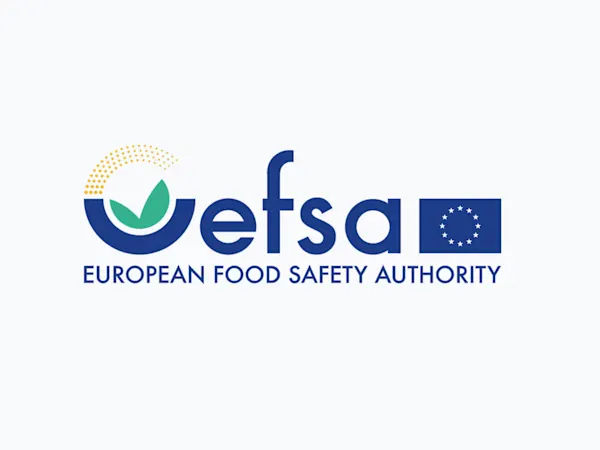
Illinois to Ban Nonbiodegradable Plastic Glitter in Personal Care Products by 2029
Illinois will prohibit nonbiodegradable plastic glitter in personal care products by 2029, impacting manufacturers, retailers, and regulators alike.


The UK Environmental Protection Agency (EPA) has initiated a public consultation on its draft Biological Evaluation (BE) for benzovindiflupyr, a widely used fungicide. This review is part of the agency’s obligations under the Endangered Species Act (ESA), which requires that any registered pesticide be assessed for its potential risks to endangered or threatened species and their critical habitats. The EPA's evaluation focuses on understanding whether the use of benzovindiflupyr could harm these species or modify their habitats in ways that threaten their survival.
The draft Biological Evaluation reveals that benzovindiflupyr poses significant risks to several endangered and threatened species. The EPA found that the fungicide is highly toxic to a wide range of aquatic and terrestrial organisms, including freshwater fish, birds, reptiles, amphibians, and mammals. For certain species, benzovindiflupyr is likely to adversely affect their populations, either through direct toxicity or by impacting their food sources and habitats.
Aquatic species are at high risk, with freshwater and estuarine/marine fish among the most affected. Acute exposure to benzovindiflupyr significantly reduces growth in freshwater fish, while chronic exposure may lead to long-term population declines. Similarly, freshwater and marine invertebrates—such as shrimp and other small organisms critical to aquatic ecosystems—are also vulnerable to the toxic effects of this fungicide, with impacts on their reproduction and survival.
For terrestrial animals, both acute and chronic risks have been identified. Birds, mammals, and reptiles are susceptible to the toxic effects of benzovindiflupyr, particularly through ingestion of contaminated food or direct exposure in treated areas. The fungicide is classified as highly toxic to birds, with effects that include reduced food consumption and stunted growth in hatchlings, potentially threatening population sustainability. Reptiles and amphibians, which share habitats with these birds, are similarly at risk.
The evaluation also assessed the risk of adverse modification to critical habitats, areas essential for the survival and recovery of listed species. Benzovindiflupyr could alter these environments, especially through water runoff and soil contamination. The EPA's findings suggest that the fungicide could be particularly damaging to wetland habitats, which support a diverse range of species, including amphibians, fish, and plants that rely on clean water for survival.
While the EPA identified the potential for widespread environmental contamination, it also highlighted the importance of habitat-specific evaluations, noting that benzovindiflupyr's impact varies depending on local conditions, such as soil composition, water flow, and climate. For example, habitats with high exposure to agricultural runoff are at increased risk, particularly in areas where multiple pesticides are used.
One of the more critical findings involves the potential harm to bee populations and other pollinators. While adult bees are relatively safe from the acute toxic effects of benzovindiflupyr, the fungicide is highly toxic to bee larvae. Chronic exposure during developmental stages can lead to reduced adult emergence, weakening bee colonies over time. Given the importance of bees to pollination and the wider ecosystem, this finding raises concerns about the indirect effects on plant species that depend on pollinators for reproduction.
Another significant concern outlined in the evaluation is the persistence of benzovindiflupyr in the environment. The fungicide is highly resistant to degradation, remaining in soil and water for extended periods. This persistence increases the likelihood of runoff into nearby water bodies, where it can affect aquatic ecosystems far from the original application site. Furthermore, benzovindiflupyr has a high affinity for soil particles, meaning it can be transported with eroded soil during heavy rains, potentially contaminating large areas beyond agricultural fields.
The public consultation period, which runs from 26 September 2024 to 25 November 2024, provides an opportunity for stakeholders, including environmental groups, farmers, and concerned citizens, to review the draft evaluation and submit feedback. The EPA will use the input from this consultation to refine its final Biological Evaluation, which will then be submitted to the US Fish and Wildlife Service (USFWS) and the National Marine Fisheries Service (NMFS) for formal review. These agencies will make the final determination on whether the use of benzovindiflupyr will "jeopardise" listed species or cause adverse modifications to their habitats.
The EPA's comprehensive assessment builds upon previous risk evaluations, incorporating the most recent environmental and toxicological data to ensure that the review is based on transparent and objective science. This draft evaluation marks a critical step in the ongoing process of ensuring that registered pesticides do not threaten endangered species or their habitats.
Foresight continuously tracks 1000s of sources and maps updates to your portfolio:




Illinois will prohibit nonbiodegradable plastic glitter in personal care products by 2029, impacting manufacturers, retailers, and regulators alike.

ChemSec updates the SIN List with neurotoxicants, spotlighting brain-damaging chemicals and urging EU regulators to act swiftly on these hidden threats.

EFSA launches consultation on updating its Weight of Evidence and Biological Relevance guidance, aiming to streamline chemical risk assessment practices.
Subscribe to Foresight Weekly and get the latest insights on regulatory changes affecting chemical compliance.
Free forever. Unsubscribe anytime.
Read by professionals at